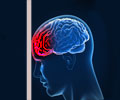TORONTO, Ont., May 27, 2009 — When Chicago Blackhawk's leading scorer Martin Havlat returned to the ice for game four of the Western Conference Final after sustaining a concussion
Similar questions on a 'swift return' are being raised by 25% of minor league hockey players now that were asked when Chicago Blackhawk's leading scorer Martin Havlat returned to the ice for game four of the Western Conference Final after sustaining a concussion only two days earlier. A new study by St. Michael's Hospital neurosurgeon Dr. Michael Cusimano has said that athletes with symptoms of a concussion do not know if they should continue to play hockey. Nearly a majority of these players were also unable to identify a concussion or its related symptoms.
The findings are part of a study by Dr. Cusimano that analyzed the concussion knowledge of 142 adults (coaches, trainers and parents) and 267 players from GTA Atom (10-years-old), Bantam (14-years-old), AA (highly competitive) and house league divisions. The study is published in the May edition of the Canadian Journal of Neurological Sciences."Serious misconceptions exist among minor league hockey players,athletes, coaches and parents when it comes to understanding the signsand symptoms of a concussion and its treatment,” said Dr. Cusimano, aprofessor of neurosurgery, education and public health at the Universityof Toronto and vice-president of ThinkFirst Canada, a national injuryprevention organization. “While many can identify how a concussion mayoccur, most cannot identify the symptoms and are under the impressionthat concussions can be treated with physician-prescribed medication orphysical therapy. Many also believe it’s okay to return to play beforethey have fully recovered from such a brain injury. This is troublesomesince repeated brain injuries can lead to long term effects in functionssuch as memory, behaviour, mood, social relations and school or workperformance."
Key findings of the study include:
- Up to two thirds of players had the mistaken impression that a player does not have to lose consciousness to have suffered a concussion
- A quarter of adults and up to half of children could not identify any symptoms of a concussion or could name only one symptom of a concussion.
- About one-half of players and a fifth of adults mistakenly believed concussions are treated with medication or physical therapy
- About a quarter of all players did not know if an athlete experiencing symptoms of a concussion should continue playing
- About 4 in 10 of younger players and 3 in 10 of the older players thought a concussed athlete could return to play when feeling "90% better" or "while experiencing a mild headache for the next game as long as it's at least two days later."
In Canada, ice hockey is the main cause of sports-related traumatic brain injury. Statistics suggest youth 5-17 have about 2.8 concussions per 1,000 player-hours of ice hockey while university and elite amateur players sustain rates of 4.2 and 6.6 concussions per 1,000 player hours.
Concussions have forced many NHL players like Brett Lindros and Pat LaFontaine to retire early and others like Eric Lindros and goalie Mike Richter to stay off the ice for an extended time because of repeated head injuries. Concussions can have cumulative and lasting effects on memory, judgment, social conduct, reflexes, speech, balance and co-ordination. Key to preventing repeated injuries is to recognize the symptoms of concussion when they occur and knowing how to deal with their effects.
Changes in rules such as removing fighting and body checking, proper use of helmets, softer shoulder and elbow pads, improved enforcement of rules, educational efforts and recognizing the critical role that professionals and the media have in shaping the culture of the sport would be beneficial, he added.
Source-Eurekalert
TAN







